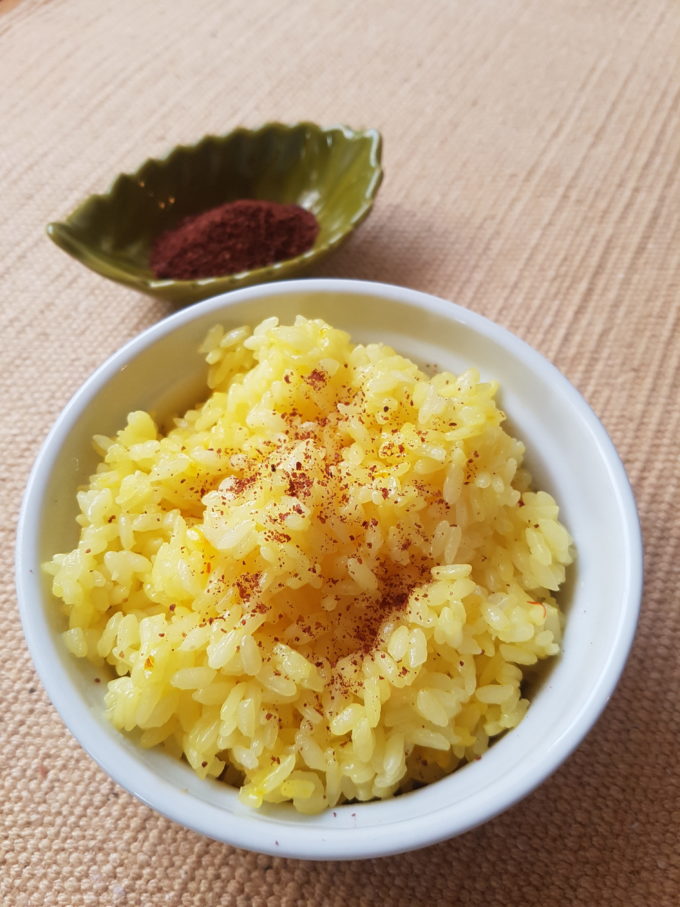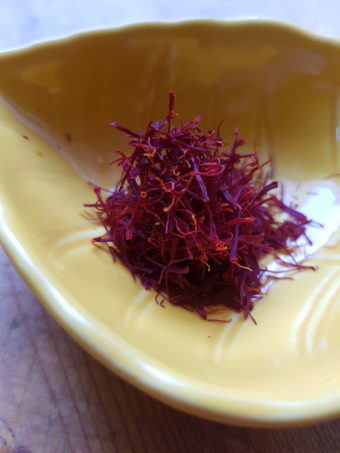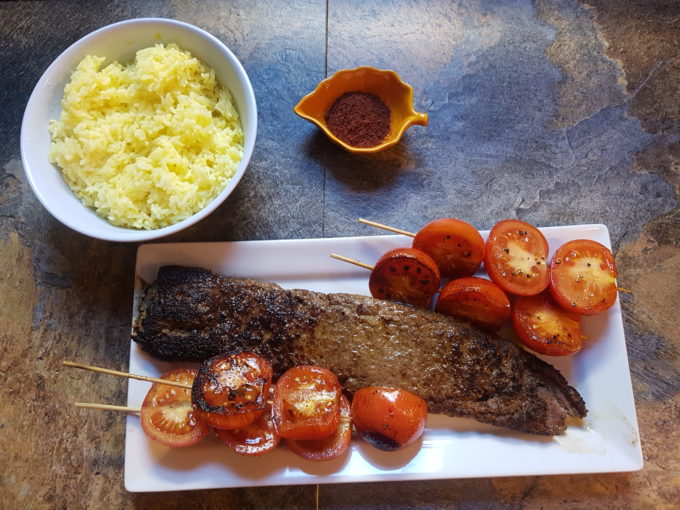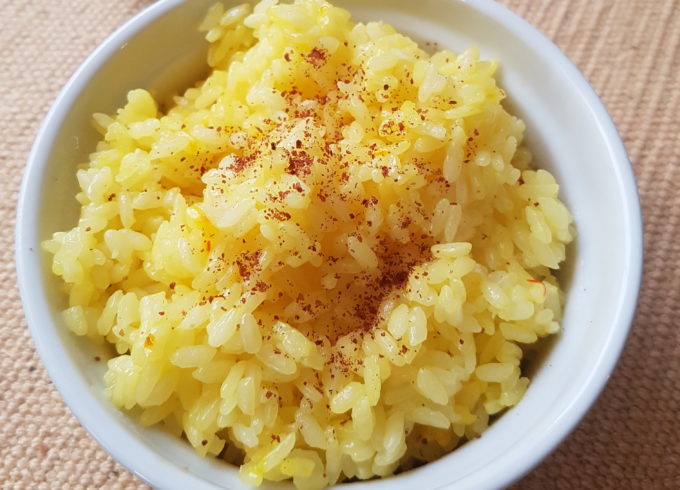
Saffron Rice with a dusting of Sumac

This pile constitutes about 3/4 of a gram.
I’m pretty sure that everyone knows by now how precious the little red stigmas from a saffron crocus are. The common rumor is that they are more expensive than gold, and at around $5,000 per pound wholesale it is no joke, but let’s compare that to the price of gold today; around $1200 per ounce. Immediately we can see already that that blanket statement is a little over the top. However, I checked the price of saffron myself just to be sure. Creating as diversified a list as I could, I included the most likely to be purchased by the average American, McCormick’s Saffron at Walmart, and found it to be about $300 an ounce. Then I looked into some of my favorite specialty spice shops from around the country I found them to all be around the $500-$550 range per ounce, with an organic version for sale at close to $650 per ounce. This all boils down to a ring-up of $10-$22.50 to purchase one gram. Now I’m sure that there are really special saffron harvests that can be purchased at higher, probably much higher prices, but let’s leave those to the purist connoisseur.
So why is saffron so expensive? Well, as mentioned above, only the little hairlike stigmas from each saffron crocus are collected. That is labor intensive! Add to that the fact that it takes more than a football field of crocuses to collect 1 pound of saffron spice, and you can see where the high cost comes into play. But what about adding this ~$15 ‘investment’ to your next shopping excursion? Trust me, at about 20 threads per recipe, a 1 gram package will last you for quite a few dishes. Also remember that more isn’t better when it comes to saffron.
So what is it good for? Ask anyone and they say, “Saffron Rice.” Obviously that is what I am offering here also, a recipe for saffron rice, but it can also be used to flavor soups and sauces. I see it often being used with seafood, particularly shrimp, and in baked goods like sweet breads. …but mostly a lot of rice recipes. Sometimes saffron is simply used as a coloring agent.
Go figured that since saffron originated in Western Asia (what we commonly know as the Middle East), 90% of the world’s production of saffron comes from Iran. I guess they just like growing flowers. (Think Poppies.) In fact, the first time I used saffron was to make rice to go with an Iranian style dinner.

My rendition of the traditional Iranian lamb ‘koodideh kabab’ dinner with saffron rice.
When it comes to the recipe below, I kept it pretty simple, but I might suggest turning it into a pilaf, or simply adding garlic and caramelized onions. Any type of chopped fresh, sauteed vegetable blends well, as do fresh herbs or choice. One recipe that I would like to play around with involves adding lemon preserves, tomatoes, fresh parsley, and almond slivers to saffron rice.
Whether you keep it simple or spice it up I’m sure this recipe will work well for you! Be sure to leave me a comment letting me know how you used it, and if it inspired you to Try Something New Today!
For those of you who are interested, here is a link to some of the other most valuable substances in the world. Some you’d expect, but some might surprise you. It’s amazing how much we, as human beings, are willing to pay for the things we seem to ‘need.’
Traditional Saffron Rice
By:semiserious chefs
Serves:4-6
Ingredients:
- 2 cups basmati rice*
- 3 cups water+salt and pepper to taste
- OR 2 cups chicken or vegetable stock and 1 cup water
- 1 pinch saffron (~20 threads)
*Basmati is a particular type of long grain rice common to India and Western Asia. It is the traditional choice for saffron rice. You should be able to find it in most grocery stores. Jasmine rice is similar, but you can substitute a generic long grain rice as needed. Be sure to check the directions for the specific type of rice you substitute.
Directions:
- Crush the pinch of saffron between you fingers into a small dish with about 2 tablespoons of water. This is important. It will help to release the flavors. Let steep for 10 minutes.
- Add the rice, stock and/or water, and jasmine to a small pot. Cover and bring to a boil over medium high heat. Reduce to low and let simmer until tender, 15-20 minutes.
- Remove from heat and let stand for 5 minutes.
- The traditional serving of saffron rice calls for it to be topped with butter upon plating. Sumac is also a prevalent table condiment available for sprinkling.
Optional: Try adding a favorite vegetable, chopped and sauteed as desired, to your rice. Or perhaps fresh herbs. See article above for ideas.


Post a comment